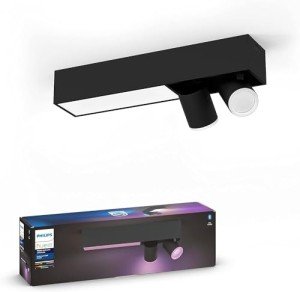A Positive Rant Concerning Shop Lighting UK
Shop Lighting UK : Illuminating the Retail Experience
In the ever-evolving world of retail, the importance of shop lighting can not be overstated. It not just enhances the aesthetic appeal of products but likewise affects customer behavior, their mood, and the overall shopping environment. With developments in innovation and style, shop owners in the UK have a myriad of options to pick from when it comes to lighting options. This short article will explore the kinds of lighting readily available, their advantages, and considerations for developing the ideal atmosphere in a retail area.
Importance of Proper Shop Lighting
Reliable shop lighting plays an important role in client experience and can significantly impact sales. Here are some key factors why appropriate lighting is necessary for retail environments:
- Highlighting Products: Good lighting accentuates items, making them more appealing to consumers.
- Developing Atmosphere: The best lighting can set the mood and evoke emotions, influencing purchasing choices.
- Enhancing Safety: Well-lit stores are safer, helping customers navigate without threat of tripping or mishaps.
- Improving Visual Merchandising: Proper lighting can boost screens, making them vibrant and captivating.
Types of Shop Lighting
Shop owners can select from numerous kinds of lighting, each serving various functions, consisting of ambient, job, accent, and decorative lighting. Here's a breakdown of each type:
Type of Lighting
Description
Best Uses
Ambient Lighting
Provides overall illumination to the area.
General retail locations like shops and grocery stores.
Task Lighting
Focuses on specific locations to boost visibility for jobs.
Checkout counters and dressing rooms.
Accent Lighting
Emphasizes specific items or displays, producing a centerpiece.
Show cases, art, or promotional items.
Decorative Lighting
Includes visual appeal and enhances the general decoration.
Chandeliers and unique fixtures in high-end stores.
1. Ambient Lighting
Ambient lighting is the foundational illumination within a shop. It fills the entire area, guaranteeing that customers can see and navigate conveniently. Retailers need to think about using LED panels or ceiling-mounted fixtures, as they use energy effectiveness and exceptional light distribution.
2. Task Lighting
Job lighting is essential for areas where specific activities take place, such as checkout counters or workstations. Shop owners can install under-cabinet lighting or track lights to focus illumination on these areas, improving the convenience and experience for both personnel and customers.
3. Accent Lighting
Accent lighting helps accentuate particular items or functions within the store. This kind of lighting can be achieved through spotlights, track lights, or strategically placed wall-mounted fixtures. It is particularly reliable for showcasing featured products, advertising screens, or art work, guiding customer focus where it's most needed.
4. Decorative Lighting
Beyond functionality, decorative lighting aspects include design and character to a retail space. Special fixtures, such as pendant lights or large chandeliers, can produce an unforgettable environment, especially in boutiques or high-end merchants. These statement pieces not just illuminate but likewise enhance the shop's branding and visual appeal.
Selecting the Right Lighting for Your Shop
When picking lighting for a retail environment, shop owners should consider the following factors:
- Store Type: Different kinds of retail need varying lighting solutions. A fashion jewelry store might need softer, more focused lights, while a supermarket might need brighter ambient lighting.
- Color Temperature: The color of light can affect the understanding of products. Warm lights (under 3000K) create a cozy feel, while cool lights (above 3000K) can make a space feel more contemporary.
- Energy Efficiency: The use of LED lighting not only conserves energy however likewise lowers costs in time.
- Flexibility: Install dimmers or adjustable fixtures to adjust lighting for various events or seasonal changes.
The Future of Shop Lighting
As innovation advances, shop lighting is ending up being significantly sophisticated. Here are some patterns shaping the future of retail lighting in the UK:
- Smart Lighting Solutions: Integrated technology permits for push-button control and automation of lighting systems through mobile phones or home assistants.
- Sustainable Lighting: There is a growing focus on eco-friendly services, with retailers selecting items that reduce ecological effect.
- Centerpiece Lighting: Retailers are increasingly using lighting to create specific centerpieces that assist client traffic and boost product screens.
Frequently Asked Questions about Shop Lighting in the UK
Q: What is the very best kind of lighting for a clothes store?A: A mix of
ambient and accent lighting is typically best. Ambient lighting is necessary for overall visibility, while accent lighting can assist highlight essential pieces or collections. Q: How can I make my shop lighting more energy-efficient? A: Consider utilizing LED lights, setting up motion sensing units, or incorporating
dimmers. This minimizes energy usage and expenses in the long run. Q: Should I use natural light in my shop?A: Yes, using natural light can boost customer experience whileminimizing energy expenses. However, it is necessary to stabilize natural light with synthetic lighting, specifically on cloudy days. Q: How typically should I replace my shop's lighting fixtures?A: This depends on the kind of fixtures utilized. LED lights can last as much as 25,000 hours, while traditional bulbs****
may require to be replaced more regularly. Routine upkeep checks are suggested. In an increasingly competitive retail environment, shop lighting plays an important function in shaping customer experiences and driving sales. Retailers in the UK have a large range of options and technologies at their disposal to create the perfect ambiance. By understanding the importance of the various kinds of lighting and how to execute them effectively, shop owners can enhance their space, making shopping more enjoyable for consumers while increasing their bottom line. 